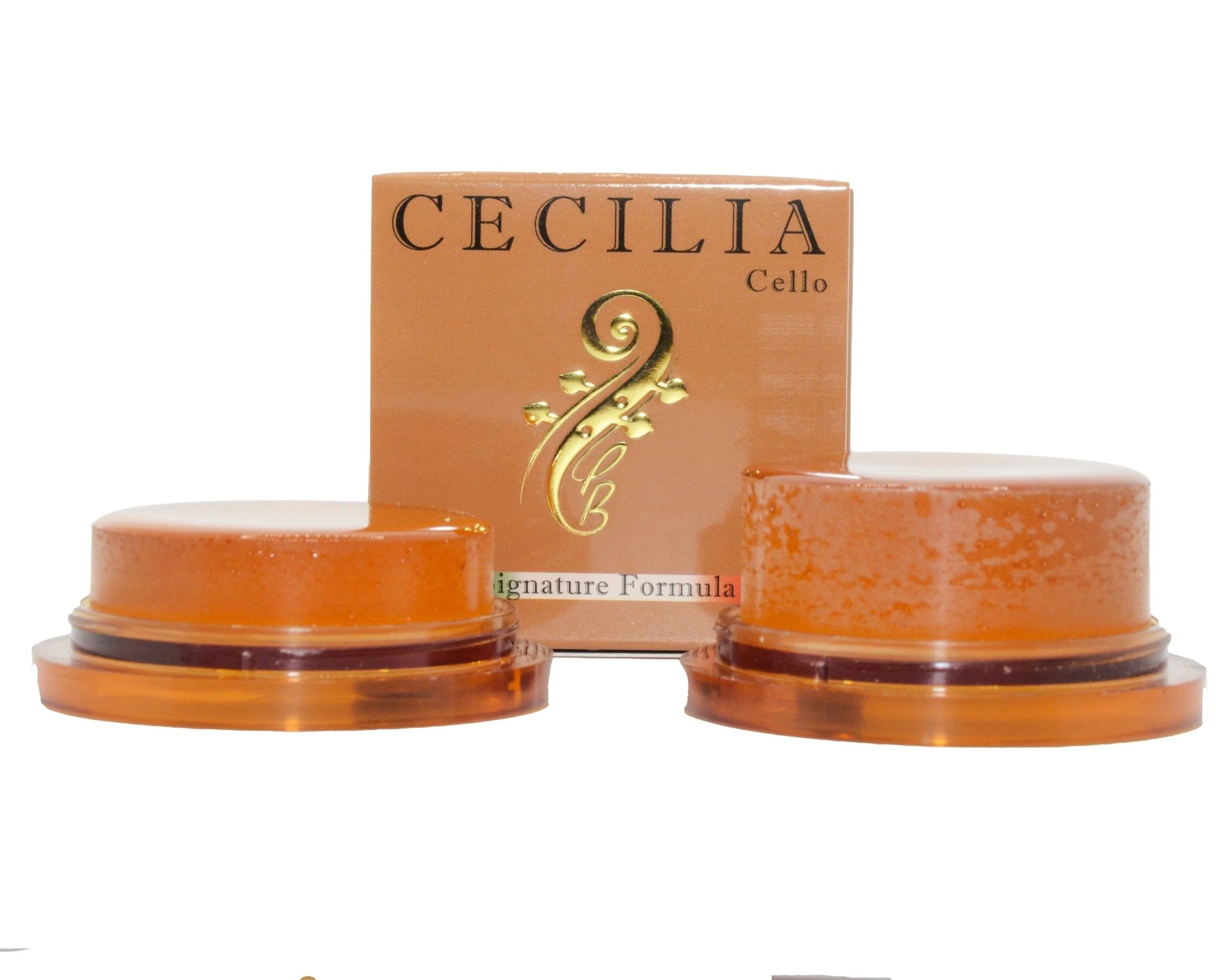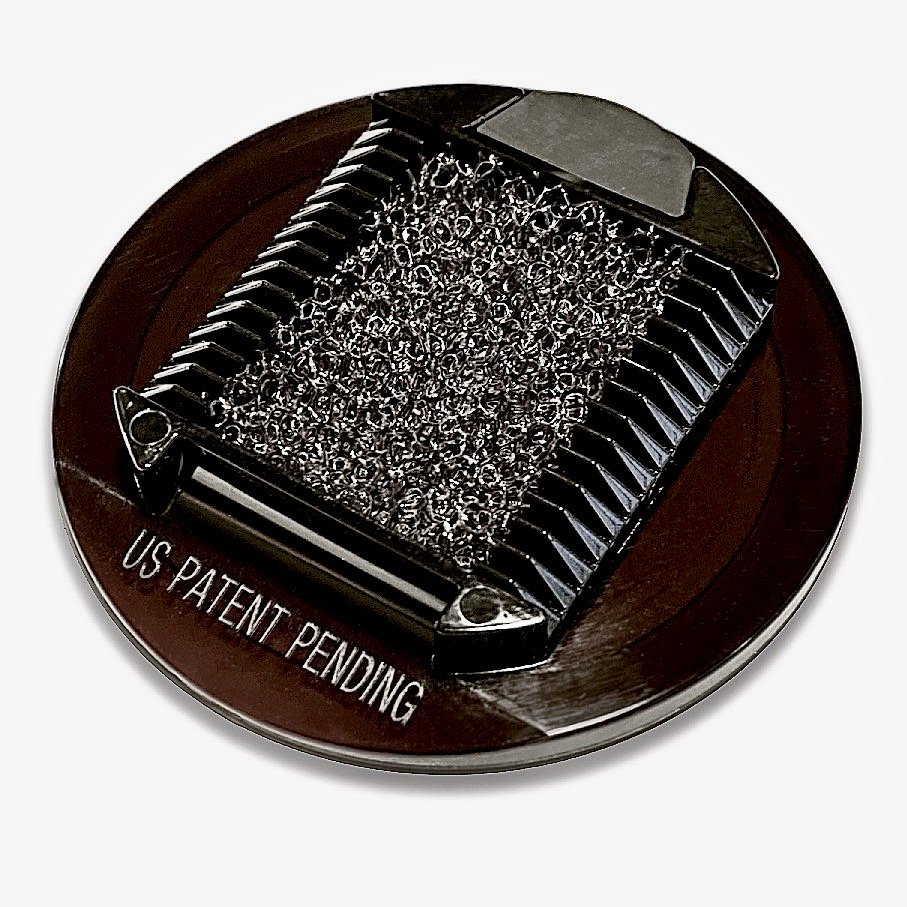
CECILIA Rosin
CECILIA Rosin — premium, low-dust formulas for violin, viola, cello & bass

Does rosin really make a difference?
About the name change
Usage & care
Explore the range
Tap a formula to open its product page.

Signature Formula
Rich, full tone with rounded articulation. Violin · Viola · Cello.
View product page
Solo
Maximum cut and clarity with forgiving feel. Violin · Viola · Cello.
View product page
A Piacere
Silkier, blended articulation inspired by Tartini “Green”. Vln · Vla · Vc.
View product page
Sanctus
Smooth, focused bowing with extra power on demand. Vln · Vla · Vc.
View product page
Bass (Softer / Firmer)
Temperature-tuned grip in silicone case. Double Bass only.
View product page
Rosin Spreader
Even, controlled application for consistent bow response. Accessory.
View product page“CECILIA rosin has a unique quality that enables me to expand the ranges of tone and bow articulation. Its consistency in various performance environments makes it second to none”
“I love the clarity, power and grip that CECILIA rosin gives me. It’s brought out new possibilities in my sound production.”
Compare the CECILIA rosin range
Pick your instrument to see the formulas comparison.
| Formula | Instruments | Tone | Projection | Articulation | Dust | Sizes | Recommended for |
|---|---|---|---|---|---|---|---|
| Signature | Violin, Viola, Cello | Rich • Full • Warm | Strong | Rounded, controlled | Low | Full, Mini | All-round use, powerful sound without excessive bite. Enhances bow contact. |
| Solo | Violin, Viola, Cello | Clear • Focused | Maximum | Immediate, crisp attack | Low | Full, Mini | Soloists, concerto, attack and clarity with bite. |
| A Piacere | Violin, Viola, Cello | Warm • Round • Silky | Moderate | Blended, smooth | Low | Full, Mini | Orchestral blend, lyrical chamber repertoire. |
| Sanctus | Violin, Viola, Cello | Smooth • Focused (ring) / Extra power (centre) | Strong → Very strong (on demand) | Smooth with grip when needed | Low | Full | Smooth bowing with focused sound, plus extra power when needed. |
| Bass | Bass only | Powerful • Grippy | High | Secure traction | Low | Softer (≤ 11 °C), Firmer (≥ 17 °C) | Softer and Firmer options tuned for temperature — orchestral & solo bassists. |
All CECILIA rosins are professional-grade and designed to use sparingly (low dust, long-lasting).

FAQs
Is CECILIA rosin still made by hand?
Yes it is. Every single block of CECILIA rosin is made in the traditional way, and hand poured by Peter Bahng.
How much CECILIA rosin should I apply?
Only a small amount is needed. Start light; add a touch more if you need extra bite or projection. We cannot stress how important this is. You may be used to swiping rosin up and down your bow many times. You do not need to do this with CECILIA rosins.
What’s the difference between Signature, Solo and A Piacere?
Signature = rich tones, versatile without excessive bite. Solo = projection, bite, and with clear articulation. A Piacere = warmer, blended response and good with gut or synthetic strings if you are a cellist.
When should I choose Sanctus?
When you want a smooth bowing experience and then extra power when your playing demands it. This rosin can make a big sound! Two distinct responses in one cake: focused outer ring and a grittier centre for power.
Which Bass formula is right for me?
Use Softer in colder rooms (≤11 °C) for power and grip; Firmer in warmer halls (≥17 °C) for crisp response.
Important information
Product identifier: Rosin; Colophony (CAS 8050‑09‑7).
- H317: May cause an allergic skin reaction.
- P261: Avoid breathing dust/fume/gas/mist/vapours/spray.
- P280: Wear protective gloves/clothing/eye protection/face protection.
- P302+P350: IF ON SKIN: Wash with plenty of water/…
- P333+P313: If skin irritation or rash occurs: Get medical advice/attention.
- P362+P364: Take off contaminated clothing / Wash before reuse.
- P501: Dispose of contents/container to an authorised waste collection point.
Recycling: Base: 100% Polystyrene (PS). Lid: 100% PMMA. Please recycle responsibly.

Cremona in America · Peter Bahng
The history of Cecilia Rosin — from inception to the present day
From an inspired workshop experiment to a trusted professional staple, here’s how Cecilia Rosin grew into a modern collection loved by string players worldwide.
Where curiosity met craft
In 1998, a young Peter Bahng was practising violin in his father Andrea’s workshop. Andrea was immersed in varnish research—often sap-based—while Peter began testing rosin variations, exploring shared ingredients and refining formulas to make playing easier and sound better.
The first launch
After many small-batch experiments, Peter found a compound that enhanced both ease and tone. While he returned to the Cleveland Institute of Music, his parents helped bring the original Tartini rosin to market in 2001—and a legend was born.
Growing pains & lessons
Subsequent business changes led to a rename from Tartini to Andrea, with production happening at two companies using different formulas. Quality inconsistencies followed, and by 2007 production of Andrea rosins ceased for a time.
Back to the original feel
Peter—then a professional violinist in New York—founded Cremona in America and, with his mother Cecilia, revived the original Andrea formula without compromise for professional players. Over the next decade he expanded the range, ultimately producing 200,000+ Andrea rosins.
A name that honours a legacy
Following Cecilia’s passing in 2019, Peter renamed the brand CECILIA in her honour—aptly sharing a name with the patron saint of musicians. From early 2020 onward, production moved entirely under the CECILIA name. Formulas did not change.
Note: Orchestra rosin has been discontinued; Solo, A Piacere, and Sanctus continued alongside the flagship Signature Formula.
Signature sound, consistent performance
Today’s CECILIA range focuses on expressive, reliable response across climates and playing styles, including Signature Formula, Solo, A Piacere, Sanctus, and dedicated Bass rosins.
Essence: refined grip, long life, and musical clarity—engineered in New York with a player’s ear.
"True Artist" by Cecilia Rosin Collection
